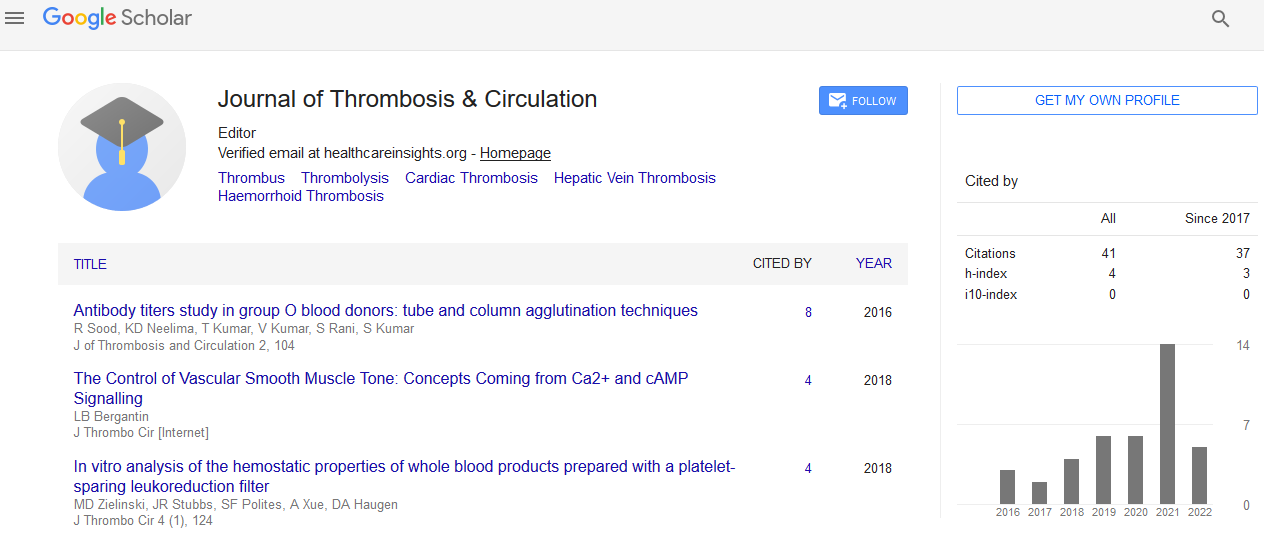Indexed In
- RefSeek
- Hamdard University
- EBSCO A-Z
- Publons
- Google Scholar
Useful Links
Share This Page
Journal Flyer

Open Access Journals
- Agri and Aquaculture
- Biochemistry
- Bioinformatics & Systems Biology
- Business & Management
- Chemistry
- Clinical Sciences
- Engineering
- Food & Nutrition
- General Science
- Genetics & Molecular Biology
- Immunology & Microbiology
- Medical Sciences
- Neuroscience & Psychology
- Nursing & Health Care
- Pharmaceutical Sciences
Abstract
Eosinophilic Disorders: Systematic View
Mani Chandan Katthula
Eosinophilic disorders are characterized by increased levels of eosinophils in one or more places in the digestive tract. Eosinophils are white blood cells that play a role in fighting parasites and allergic reactions. The esophagus, stomach, small intestine and large intestine (colon) may be affected.There are three types of eosinophilic disorders: Eosinophilic esophagitis. Eosinophilic esophagitis (EoE) affects the esophagus. Eosinophilic gastroenteritis. Eosinophilic gastroenteritis (EGE) refers to the stomach and small intestine. Eosinophilic colitis. Eosinophilic colitis (EC) refers to the large intestine (colon). Eosinophilic esophagitis (EoE) is the most common eosinophilic disorder. EoE is characterized by elevated eosinophils in the esophagus. EoE is believed to be an allergic reaction most likely to food. There is some evidence to suggest that the allergic substance may be present in the environment. Many patients with EoE also suffer from other allergic diseases, including asthma, eczema and sinus disease.
Published Date: 2020-11-27; Received Date: 2020-11-01

